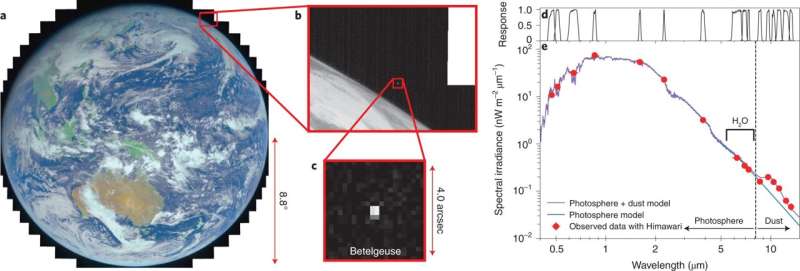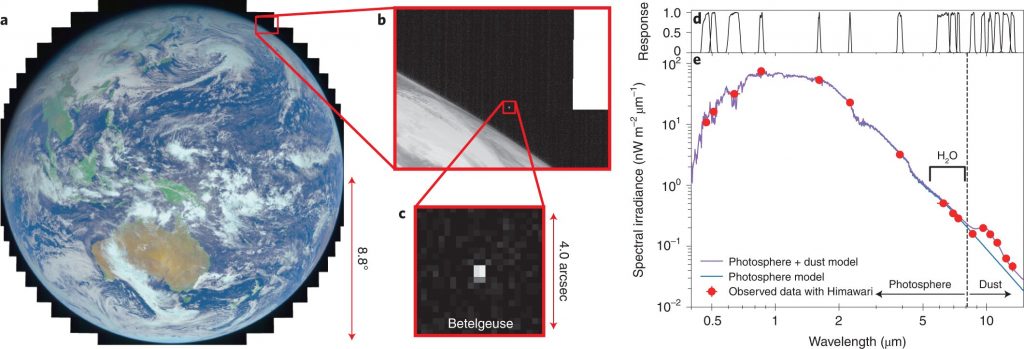
A trio of researchers at The University of Tokyo has found that data from weather satellites can be used to study the stars. In their paper published in the journal Nature Astronomy, Daisuke Taniguchi , Kazuya Yamazaki and Shinsuke Uno describe studying the dimming of Betelgeuse in 2019 by analyzing data from the Himawari-8 weather satellite.
In 2019, Betelgeuse, a red supergiant star, diminished in brightness, an event some in the space community dubbed the Great Dimming. The dimming lasted until early 2020. Space scientists from around the globe studied the unexpected phenomenon, and while some suggested it was an indication that Betelgeuse was about to go supernova, others disagreed, insisting it appeared more likely that while some or all of the star might have dimmed, it seemed more likely that the dimming was due to interference from a dust cloud.
In this new effort, the researchers wondered if the Japanese weather satellite Himawari-8 could provide some insight into the reason for the dimming. They noted that it records infrared data and sends it down to Earth-based stations 24 hours a day. They also noted that the satellite had been sent so far out into space that it was able to capture weather for the entire surface of the planet and also some of the stars in the background.
The researchers obtained data from the satellite for the years 2017 to 2021 and analyzed it for imagery of Betelgeuse. They discovered that they were able to obtain data regarding the star once every day for all of the years they studied. They analyzed that data to learn more about the dimming that occurred in 2019 and found evidence of the temperature of the star lessening by approximately 140 degrees Celsius. They also found evidence of dust obscuring the view and suggest their analysis confirms what many others had suspected regarding the reason behind the dimming.
Their work shows that data from weather satellites could be a valuable resource for space scientists. Not only is the data they provide more regularly collected than that from traditional ground-based telescopes, it provides a cleaner view because the satellites circle above the Earth’s atmosphere.
Explore further
New study sheds light on the mysterious dimming of Betelgeuse
Daisuke Taniguchi et al, The Great Dimming of Betelgeuse seen by the Himawari-8 meteorological satellite, Nature Astronomy (2022). DOI: 10.1038/s41550-022-01680-5
© 2022 Science X Network
Study of data from weather satellite confirms theories surrounding the dimming of Betelgeuse in 2019 (2022, May 31)
retrieved 31 May 2022
from https://phys.org/news/2022-05-weather-satellite-theories-dimming-betelgeuse.html
part may be reproduced without the written permission. The content is provided for information purposes only.

